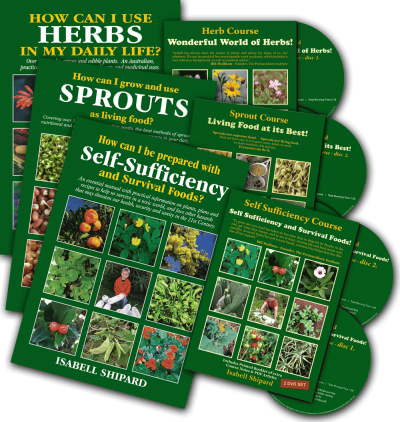Vainilla, Araco Aromatico, Banillenlen
Vanilla planifolia syn. V. fragrans, Myrobroma fragrans F.
Orchidaceae
… … omitted text, please see How can I use HERBS in my daily life? for full text.
Culinary Uses
Food scientists have found that pure vanilla extract not only blends well with fresh fruit and fruit compote but also has the power of enhancing the natural sweetness of fruits, thus requiring less sugar in processing, which also means less kilojoules. Vanilla’s exquisite flavour also enhances and heightens the flavour of what it is added to, for example coffee and chocolate.

A recent news item on TV gave interesting research, that for people who eat chocolate in times of stress, the same feel-good chemical that is in chocolate, is found in vanilla and people may find they can relieve their stress and their chocolate craving by just sniffing the vanilla! This made me think of plastic baby toys of 30 years ago, that smelt of vanilla. Were they designed that way to calm stressful babies? Vanilla beans are used to flavour cakes, biscuits, whipped cream, milk drinks, desserts like creamed rice, confectionery, liqueurs, and is absolutely essential in icecream, which can seduce most taste buds on a hot day. To use the bean, a piece about 5cm long is cut, slit down the centre and added to the milk when boiling custards, rice, tapioca etc. This piece of bean is removed at the end of cooking, rinsed, dried and used several times over. A good place to store it is in the sugar canister, where it will also flavour the sugar and remain clean and dry, to use again.
… … omitted text, please see How can I use HERBS in my daily life? for full text.


